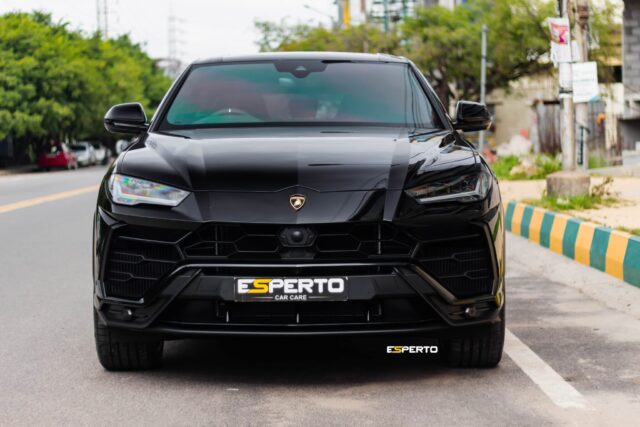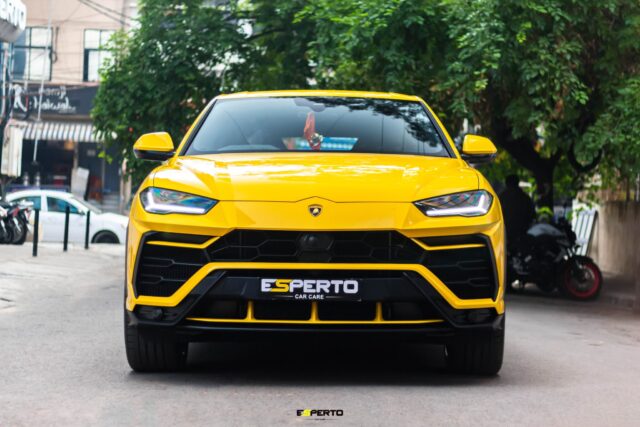Wondering how many coats of ceramic coating your car needs? You’re not alone. Many car owners want to protect their vehicles from scratches, UV rays, and dirt. They look into ceramic coatings for help.
Here’s a fact: the right number of layers can make a big difference. This blog explains how many layers of ceramic coating you should apply and why it matters. Wait until you see what two coats can do! Keep reading for some eye-opening info.
How Many Ceramic Coating Layers Should You Apply?
Let’s transition from the basics to discussing the number of ceramic coating layers your car potentially requires. The number of layers needed might fluctuate based on numerous factors, such as the vehicle’s exposure to environmental pollutants, its paint condition, and the level of protection you want.
Commonly, the practice of applying multiple layers boosts durability and yields a chemically resistant surface that defends against bird droppings, tree sap, UV rays, and more. However, this sparks a question: Is a single layer adequate? With just two applications of ceramic coating, you can obtain full coverage and superior protection for your vehicle.
In general terms, one layer might be sufficient for standard protection but possibly lacks in delivering the highest quality protection against everyday wear and tear. For those desiring an additional advantage in paint preservation and hydrophobic characteristics — to ensure water beads off easily — a second ceramic coating layer becomes necessary.
This approach with multiple layers performs the crucial role of safeguarding the car’s exterior and preserving its glossy finish over time by more efficiently reflecting UV rays.
What Factors Determine the Number of Layers?
The number of ceramic coating layers required for your vehicle depends on various factors. These include the car’s paint condition, the type of ceramic coating used, and the desired level of protection.
- Type of Vehicle: Different vehicles might need different levels of protection based on their use. A family SUV that sees a lot of highway miles may require more layers than a weekend sports car.
- Existing Paint Condition: Cars with new or well-maintained paint might only need two layers for optimal protection. Vehicles with older or damaged paint could benefit from additional layers to achieve a uniform finish.
- Desired Level of Protection: If you’re aiming for top-notch protection against environmental contaminants and UV damage, applying multiple layers of ceramic will create a stronger protective barrier.
- Environmental Conditions: Vehicles exposed to harsher climates, such as intense sunlight or salty air, often need more layers to maintain the ceramic coating’s hydrophobic properties.
- Frequency of Use: Daily drivers versus occasionally used cars have different protective needs. The more a car is driven, especially under challenging conditions like off-road or in heavy traffic, the more layers are advisable for enduring performance.
- Type of Ceramic Coating Used: The base coat layer and topcoat layer have distinct roles; starting with a strong last base coat layer ensures enhanced durability while adding a topcoat layer boosts hydrophobicity and gloss.
- Manufacturer Recommendations: Follow guidelines provided by your ceramic coating manufacturer since some products are designed to work best when applied in just two coats or might specifically recommend multiple applications for best results.
Choosing the right number of ceramic coating layers ensures your vehicle receives adequate paint protection without overdoing it. Now, let’s see how long you should wait between applying these ceramic coat applications.
Is One Layer of Ceramic Coating Enough?
Many car owners wonder if a single layer of ceramic coating provides enough protection for their vehicle’s paint. A basic layer does create a barrier against water, dirt, and minor scratches.
It makes the car easier to clean and enhances its shine. However, one layer may not offer complete coverage against all types of damage.
Applying multiple layers of ceramic coatings amplifies the level of protection. Each additional coat builds on the first, creating a thicker, more durable shield. This multi-layer shield is better at resisting chemicals, swirl marks, and UV rays that can fade the paint over time.
For those seeking best-in-class protection for their vehicle’s exterior surfaces from airborne pollutants and other impurities, considering more than one coat will likely yield longer-lasting results.
Benefits of Multiple Layers of Ceramic Coating
Applying multiple layers of ceramic coating creates a stronger barrier against the environment. This multi-layer approach offers better protection from UV rays, chemical stains, and car airborne pollutants.
Each layer bonds to the surface and the previous coat, building up a shield that keeps the car’s exterior safer from ordinary wear and tear. This method ensures your vehicle maintains its shine longer and provides best-in-class protection.
Two or three ceramic coating layers can significantly enhance a vehicle’s durability. Knowing when each coat is ready for another application ensures that this enhanced protection adheres properly to your vehicle’s paintwork.
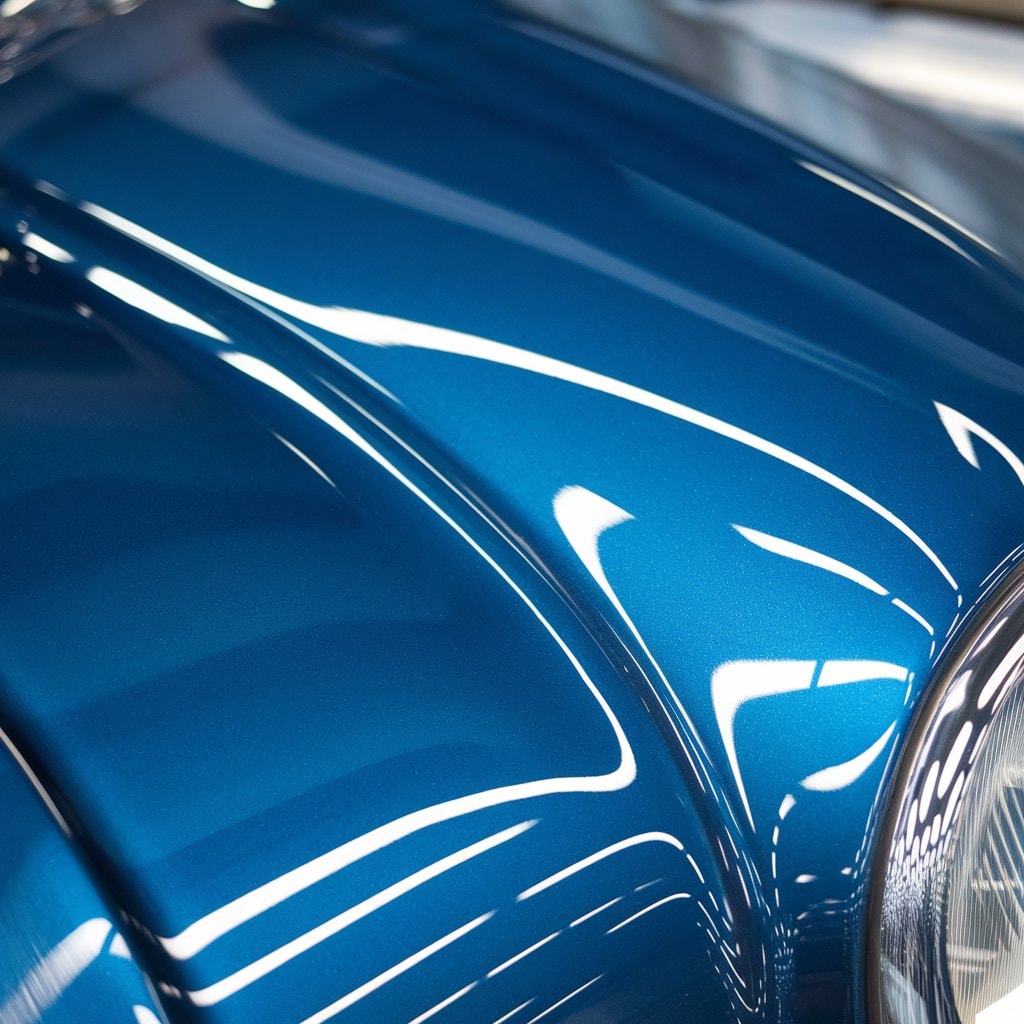
How Long Should You Wait Between Ceramic Coat Applications?
You should wait at least 12 hours between ceramic coat applications. This time allows the first layer to bond properly with your vehicle’s paintwork. The bonding process is crucial for creating a durable barrier against dirt, grime, and UV rays.
If you apply the second layer too soon, it might adhere poorly to the surface. That leads to less protection and a shorter lifespan for the coating.
Humidity plays a big role in drying times as well. In areas with high humidity, you may need to wait longer than 12 hours before applying further layers of ceramic coating. A simple way to check if the first layer is ready for another application is by testing it lightly with your fingertip in an inconspicuous area.
If it feels slightly tacky but doesn’t leave residue on your finger, it’s usually safe to proceed with the second layer of ceramic coating for that extra smooth finish and best-in-class protection.
Understanding the Necessary Time Interval Between Layers
Applying multiple layers of ceramic coating requires patience and precision. The ideal time interval between layers varies, but a general rule is to wait about 12 hours after applying the last base coat.
This waiting period ensures that each layer adheres well to the surface and can fully cure without interference from the next coat being applied too soon. Humidity plays a crucial role in drying times; in areas with higher humidity, it might take longer for each layer to dry.
Checking if the first layer is ready for another involves a simple touch test. If the coating feels tacky or leaves fingerprints, it needs more time to dry. Only when the surface feels dry and smooth should you proceed with applying a second layer of ceramic coating. Moving on, let’s explore how humidity impacts the drying process further.
Effects of Humidity on Drying Time
After detailing the necessary waiting periods between ceramic coat applications, it’s crucial to address how humidity impacts drying time. Humidity has a significant impact on the curing process of ceramic coatings.
High levels of moisture in the air can slow down drying times considerably. This means that if you’re applying multiple layers, you might have to wait longer than anticipated before adding another layer.
It’s essential for car owners and enthusiasts who aim for that flawless finish to consider their local climate when planning their application schedule.
In areas with high humidity, it takes longer for each layer of ceramic coating to bond properly to the vehicle’s clear coat. Conversely, low-humidity environments can accelerate the drying process but require careful monitoring to prevent the coating from drying too quickly, which might affect its bonding strength and overall effectiveness.
For those seeking best-in-class protection against dirt and grime while maintaining a professional auto appearance, timing your ceramic coating applications according to current weather conditions is a strategy worth considering.
Proper planning ensures not just complete coverage but also guarantees lasting paint protection.
How to Know When the First Layer is Ready for the Next?
Moving from understanding the effects of humidity on drying time, it’s crucial to identify when the first layer of ceramic coating is ready for a second application. Checking if the surface feels dry to the touch is a simple method.
However, more is needed. The real sign that a ceramic layer has been set properly involves observing a distinct change in the texture and appearance of your car’s paint. It should not feel tacky or sticky.
A good rule is to wait at least one hour before applying another layer; some manufacturers might recommend waiting up to 12 hours after the last base coat. This interval ensures that each ceramic coat layer adheres well and enhances your vehicle’s protection against contaminants and UV rays.
Using these guidelines helps maintain your vehicle effectively. It ensures that you get ceramic coating benefits like lasting shine and best-in-class protection for your car’s body without over-applying the product.
What Happens if You Apply Too Many Layers?
Applying an excessive number of ceramic coating layers can result in challenges. The ceramic layers cease to bond effectively beyond a certain point. This transpires because each layer must adhere soundly to the surface underneath it. Understanding how to apply multiple coats of ceramic coating is imperative, as improper layering can compromise both the appearance and durability of the finish.
If you apply more layers than required, the additional ones might not attach properly. They could even begin to peel off. Such a situation exhausts both your time and finances. It’s beneficial to have the work carried out by specialists or detailing services who are equipped to handle the process accurately, especially when dealing with environmental factors like temperature humidity, which can significantly affect the outcome.
Indicators that you’ve over-applied involve a less even surface and problems in drying. Typically, a pair of ceramic coating layers provides the ideal protection without the said problems. Applying the minimum effective number of coats while considering location and weather conditions ensures the layers perform optimally.
Advancing beyond this suggested number jeopardizes both the look and the protective characteristics of the coating itself. Every car owner desires their automobile to radiate finesse and stay safeguarded; understanding when to halt is essential. Show respect for the product guidelines and manufacturer’s instructions to ensure long-lasting results.
When Do Layers Stop Bonding?
Ceramic coatings work wonders for car protection but have their limits on how much you can layer them. You’ll find that layers stop bonding effectively after the ceramic coating has reached its maximum capacity to adhere to the vehicle’s surface.
This usually happens when trying to apply more than three layers of coating. The chemical structure of the ceramic coating is designed to bond with the car’s paint at a molecular level, but each additional layer finds less and less to cling onto. Achieving best-in-class protection doesn’t mean overloading your car with too many layers of ceramic coating.
Car enthusiasts often aim for multiple layers, thinking they will last longer, provide better UV protection, and keep dirt stains away more efficiently. Yet, an essential part of achieving long-lasting paint protection lies in recognizing when enough is enough.
Observing signs like difficulty in applying new coats smoothly or noticing that subsequent layers aren’t adhering as expected serves as a clear indicator that the application should halt, ensuring each layer applied genuinely contributes to protective effectiveness rather than detracting from it.
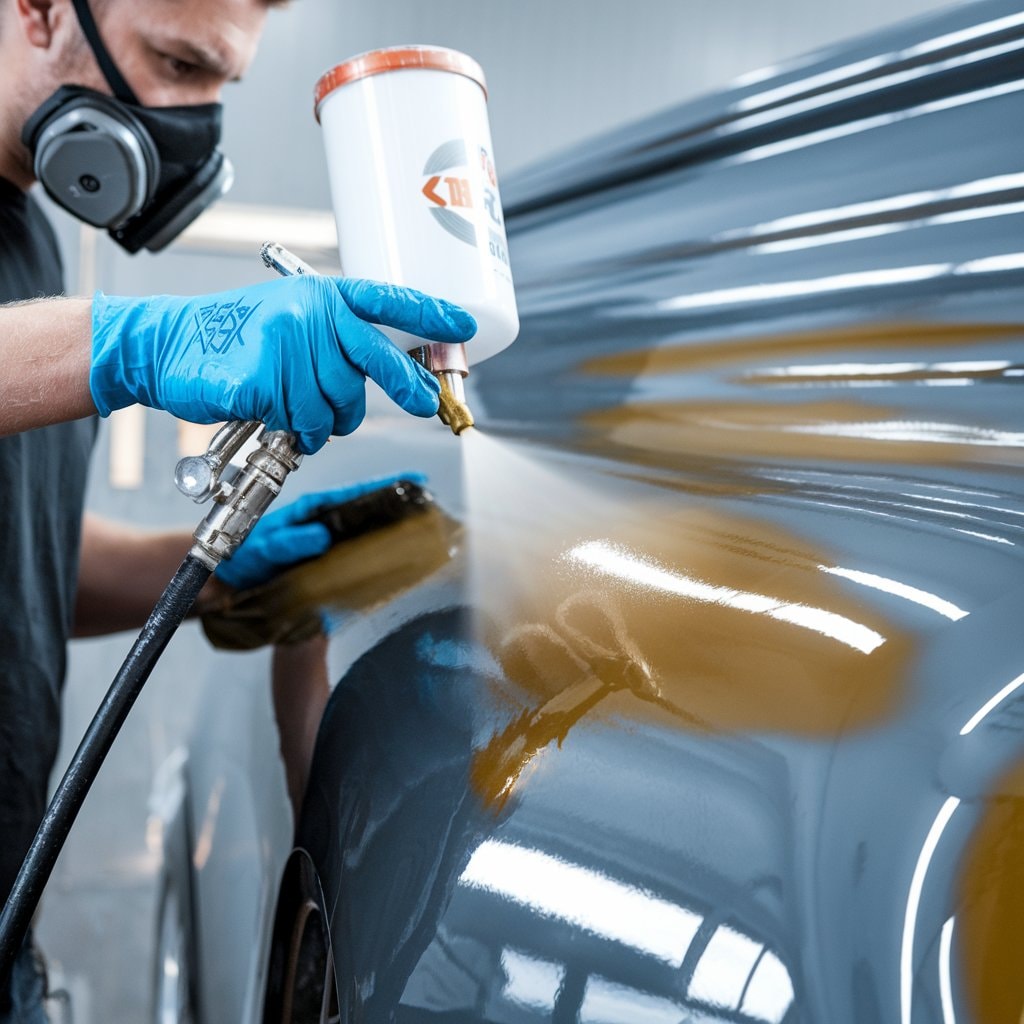
Signs of Over-Applying Ceramic Coating
Applying too much ceramic coating can lead to several issues. These issues are more than just cosmetic; they can impact the longevity and protection of the coating.
- You might see streaks or cloudiness on your car’s body. This happens when excess coating does not bond correctly with the surface or previous layers.
- Another sign is a noticeable reduction in the expected smoothness of the finish. Instead of feeling sleek, areas may feel rough or bumpy.
- Applying multiple layers before the last base layer has fully cured can prevent proper adhesion. This mistake compromises paint protection.
- The drying time increases significantly with each extra layer. Too many layers mean you’ll wait longer than necessary for your car to be ready.
- Some owners notice a decrease in the beading effect, which is a key feature of ceramic coatings. Over-application alters its efficiency.
- A softer finish that easily marks or scratches indicates too many layers. Ceramic coatings should harden to protect your car’s paint.
Discovering the right balance between protection and aesthetics requires understanding these signs.
Moving on, let’s explore how to achieve the best results with two ceramic coating layers for optimal paint protection.
Potential Risks with Three Ceramic Coating Layers
Adding three ceramic coating layers might seem like the best protection for your car, but this approach can cause issues. The top layer may not bond well with too much coating beneath it. This results in a weaker overall protective shield against contaminants. Understanding whether you can put multiple coats of ceramic coating is crucial—while it is possible, exceeding the recommended number often leads to diminished performance.
While some brands promote multi-layer systems, it’s important to ask, “can you put multiple coats of ceramic coating” without considering the consequences? The answer depends on proper surface prep and following the correct cleaning process between applications.
Cars need durable protection that adheres strongly to the surface. Otherwise, it can break down prematurely, creating a dull finish that no amount of wash, wax, or soap can correct. In such cases, owners may have to reapply the coating, leading to waste in product and effort.
Moreover, excessive layers can lead to an uneven appearance on the vehicle’s body. Some areas might look more appealing than others, detracting from the pristine finish you aimed for. Car owners and enthusiasts need to understand that more is not always better when applying multiple layers of ceramic coatings for paint protection.
How to Achieve the Best Results with Two Ceramic Coating Layers?
Applying multiple layers of ceramic coating enhances paint protection significantly. To start, ensure the car’s body is thoroughly cleaned to remove any contaminants. This foundation is crucial for the base coat to bond well with the surface.
After applying the first layer, wait at least 12 hours before adding the second layer. This interval allows the base coat to adhere properly and sets a strong foundation.
For optimal results, focus on the even application of each layer across all sections of your vehicle. The second layer should act as a reinforcement to the first, providing extra durability and shine.
Keeping your vehicle away from direct sunlight during this process prevents premature drying or uneven coverage. Following these steps carefully ensures lasting paint protection and effectively maintains your car’s aesthetic appeal.
Importance of a Strong Base Coat
A strong base coat serves as the essential initial step for any ceramic coating process. It guarantees that subsequent layers will adhere properly to your car’s body. Concentrating on surface preparation and applying a strong first layer prepares the foundation for efficient paint protection film. Additionally, using a base coat is one of the most common ways to ensure effective bonding and long-term durability.
This step is critical because it directly affects the lifespan of the ceramic coating. Without comprehensive cleaning and a sturdy base, even numerous layers can’t provide optimal defense against contaminants. For example, exposure to ultraviolet rays from the sun can degrade an improperly applied coating faster, particularly if not formulated to resist such environmental factors.
Furthermore, a meticulously applied base coat optimizes the advantages of multi-layer ceramic coatings. It enhances durability while also improving the car’s resilience against environmental harm like heat and warmth from constant sunlight. A coating applied in the shade with limited contact with contaminants is likely to cure more effectively and last longer.
The initial layer must bond accurately with the vehicle’s paint to build a lasting protective barrier. This component of the application process creates the necessary depth that a double ceramic coating relies on to offer superior protection. Therefore, consider the significance of establishing a reliable base before contemplating additional applications for improved protection and gloss, as this is among the common ways to maximize results.
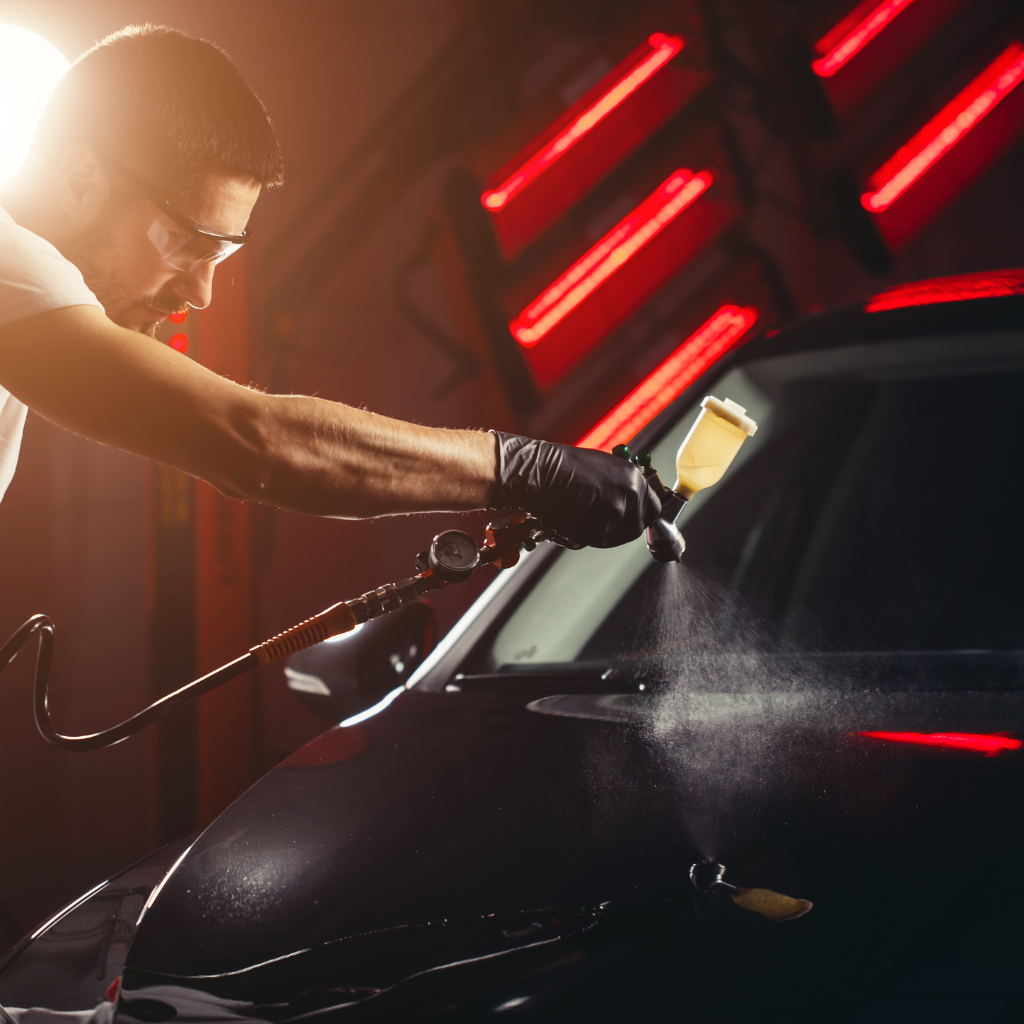
Benefits of a Proper Second Layer Application
After establishing a strong base coat, when to apply a second coat of ceramic coating becomes an important step in maximizing its benefits. This addition provides another protective barrier against environmental damage and contaminants, giving your car’s surface enhanced durability and glossiness.
The second layer ensures even more effective protection for the car’s body. It fills in any tiny gaps left by the first application, providing complete coverage and preserving vibrant colours.
This method extends the life of the ceramic coating significantly. In most cases, cars treated with multiple layers show less wear over time. Owners find that their vehicles maintain a glossy, fresh look longer than those with only one layer of protection—one reason why many choose a multi-layer approach despite potential cons like longer curing time or added cost.
Consequently, this can also increase the resale value of the car since its exterior appears well-maintained and protected from elements like UV rays and acid rain. Properly applied multi-layer ceramic coatings make cleaning less difficult, too, as dirt and grime struggle to adhere. With several options available in the market, keeping in mind your car’s condition and usage can help you decide the right layering strategy. Attention to this process ensures long-lasting and visually impressive results.
Ensuring Long-lasting Paint Protection
For long-lasting paint protection, applying a second layer of base is vital. This method secures complete coverage and reinforces the bond to your car’s body. The proper application of multi-layer ceramic coatings offers durable defense against environmental damage, ensuring security for an extended period.
It also extends the shine and health of your vehicle’s exterior for many years, depending on how well you maintain it. To achieve this, a thorough cleaning precedes the first coat to ensure it adheres well to the surface, removing any dust or contaminants.
After 12 hours, you can apply a second layer, enhancing the protective coating strength. It’s not ideal to use just one layer, as doing so may prevent the coating from reaching its full potential. While users may wonder about the optimal number of coats, it’s best to follow the manufacturer’s guidelines to get the best results.
Not all ceramic coatings are created equal, so it’s a good idea for vehicle owners to understand the procedure thoroughly before application, ensuring effective long-term protection.
Does Ceramic Coating Layer Type Affect Application?
The type of ceramic coating layer does indeed have a significant impact on the application process. The top coat and base coat serve different functions; a base coat adheres to the car’s body, providing a strong foundation, while topcoat layers add shine and protect against environmental damage.
The solvent used in ceramic coating also plays a crucial role. Different solvents affect how well the coating bonds to the vehicle’s surface and how long it takes to cure.
Choosing the right ceramic coating for your car depends on these factors. Each layer and solvent has its own set of properties that work together to safeguard your vehicle’s appearance.
With multi-layer ceramic coatings, complete coverage is achievable with just two or three layers if applied correctly, ensuring long-lasting protection. Knowing these differences helps in customizing the application process for each vehicle, leading to better durability and aesthetics.
Differences Between Top Coat and Base Coat
Top coats and base coats have distinct roles in a car’s protection. The layer of base coat acts as the first layer of defense, adhering firmly to the surface during the initial application. Its primary role is to ensure that subsequent layers bond well, which is especially important for a 3 layer ceramic coating system.
However, not all ceramic coatings require multiple layers, so following the manufacturer’s instructions is essential to achieve the best results. This foundation is crucial for multi-layer coatings, making sure they stick and stay on your car’s body despite varying driving conditions and temperature changes.
On the other hand, the top coat layer enhances durability and gloss. It is applied over the base layer or after a fresh set of multiple ceramic coating layers has been set, considering the appropriate time gap between applications. Topcoats safeguard against UV rays and contaminants, adding an extra layer of protection that keeps your vehicle looking shiny and extends the life of the coating for a few years.
By applying a topcoat layer, you add an extra layer of protection that makes your vehicle look shiny while adding longevity to the underlying ceramic layers.
Role of Solvent Used in Ceramic Coating
Solvents serve an essential function in the use and efficiency of ceramic coatings. They assist in evenly distributing the coating across a vehicle’s body, making certain that every layer sticks well to the one underneath it. Achieving consistent coverage with 2 coats of ceramic coating or several layers requires the proper curing facilitated by the right solvent.
The optimal solvent guarantees a proper dispersion of the ceramic particles, resulting in a sleek finish that does more than safeguard; it also improves the vehicle’s aesthetic while providing maximum protection and exceptional durability. This ensures the coating can withstand wear and exposure to harsh chemicals and other environmental factors.
Selecting a suitable solvent is crucial for multi-layer ceramic coatings to adhere properly. An unsuitable solvent can result in problems like inconsistent coverage or insufficient bonding between layers, which could risk the offered protective properties and maximum durability.
Besides, solvents influence drying duration; those that evaporate quickly can reduce the time needed between the application of multiple layers, allowing for extra coating without long waits. This is especially important when ceramic coatings are applied over surfaces like vinyl wrap, which requires careful consideration.
Choosing the Right Ceramic Coating for Your Vehicle
Choosing the right ceramic coating for your vehicle is essential. This decision can enhance your car’s longevity and appearance.
- Understand the types: Top coat and base coat ceramic coatings serve different purposes. Base coats provide a strong foundation that adheres well to the surface, while topcoats add additional protection and gloss.
- Evaluate your needs: If you live in an area with harsh weather, multiple layers of ceramic coating may be necessary to protect against contaminants.
- Consider the solvent: The type of solvent used in ceramic coating influences drying time and application ease. Choose one that suits your environment and waiting ability.
- Research durability: Some ceramic coatings promise complete coverage in just two applications, lasting longer if properly maintained.
- Check compatibility: Make sure the ceramic coating is suitable for your vehicle’s paint type. Some formulas are specifically designed for certain paint finishes.
- Read reviews: Look into feedback from other car owners who have applied multi-layer ceramic coatings to their vehicles for insights on real-world performance.
- Ask professionals: Experts like Esperto Car Care Coimbatore can offer advice based on experience with expensive packages, advising you on how many layers yield the best results without overcharging customers.
- Know when to apply: Applying a second layer before the first layer has fully cured can compromise bonding; wait at least 12 hours after applying the last base layer.
- Beware of over-application: More isn’t always better; three or even 10 layers might not bond well, leading to peeling or cloudiness.
- Maintenance matters: Invest in a coating that will last longer if you keep up with proper maintenance, ensuring long-lasting paint protection regardless of how many layers you apply.
By following these guidelines, choosing the right ceramic coating becomes simpler, safeguarding your investment and keeping your car looking its best for years to come.
Conclusion
Understanding how much ceramic coating is needed for a car and the method to apply it ensures prolonged brilliance and protection for your vehicle. This knowledge is essential for car owners, enthusiasts, and bike lovers, recognizing the need for multiple layers for longevity and acknowledging the problems with surplus applications.
The best strategy involves laying a firm base layer followed by one or two secondary layers for excellent results. This process secures your car’s exterior and improves its aesthetic appeal over days.
Choosing the appropriate ceramic coating for your vehicle entails weighing the type of solvent used and identifying if you’re applying a top or base coat. Each choice influences the successful adhesion of the coating to the surface and its resistance to environmental pollutants. Today, many people call us to learn the specifics and share this important thing.
Adhering to this straightforward guide will assist in providing your car with durable paint protection while avoiding the peril of excess application.



